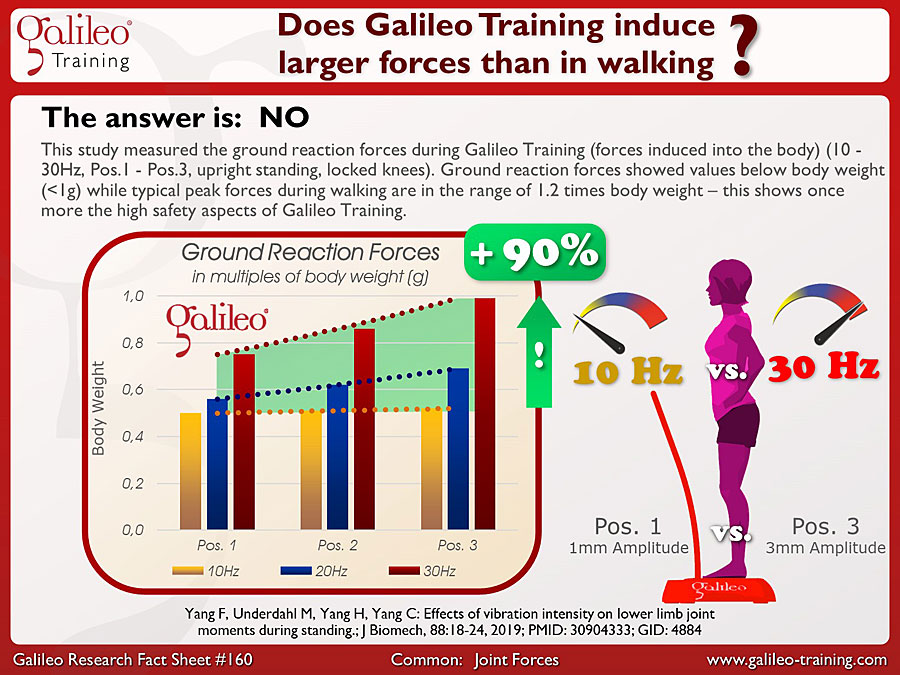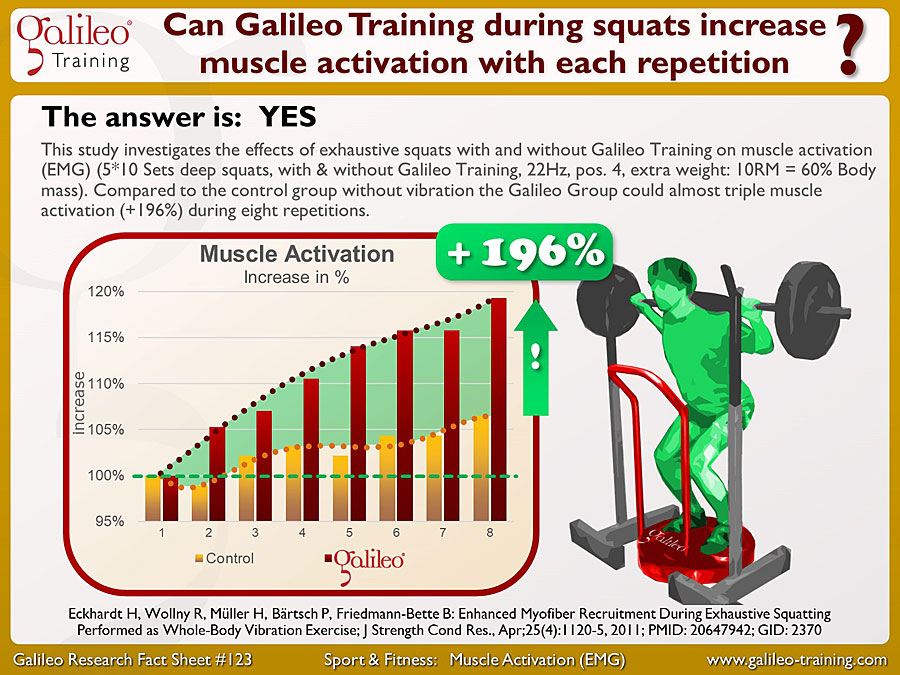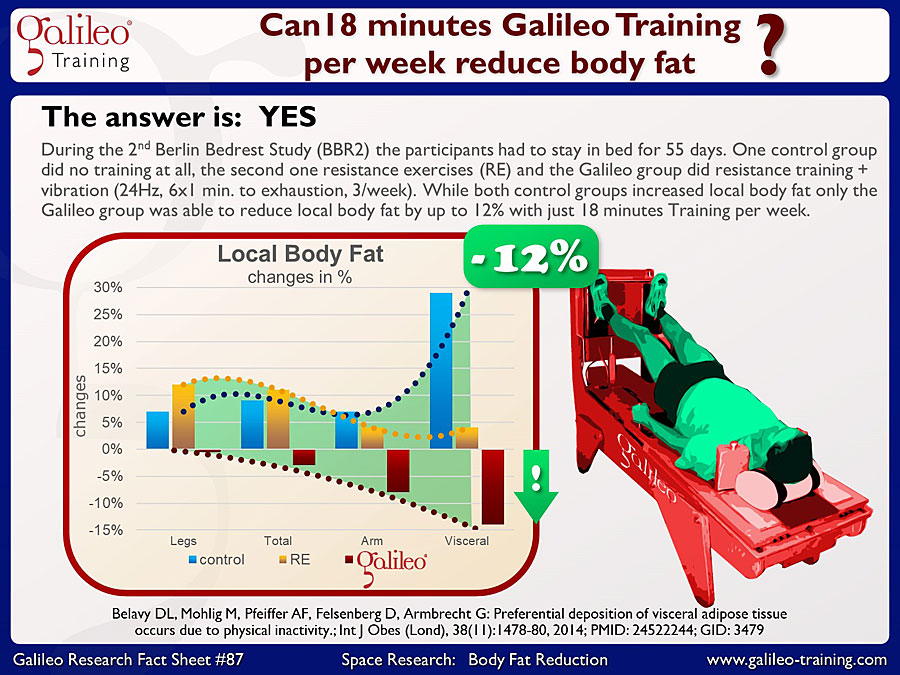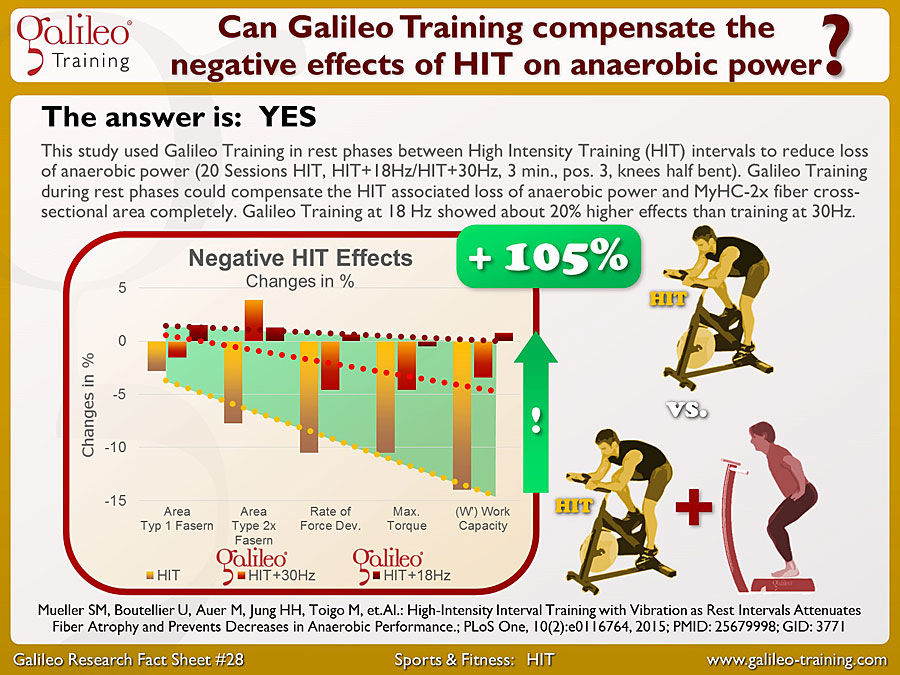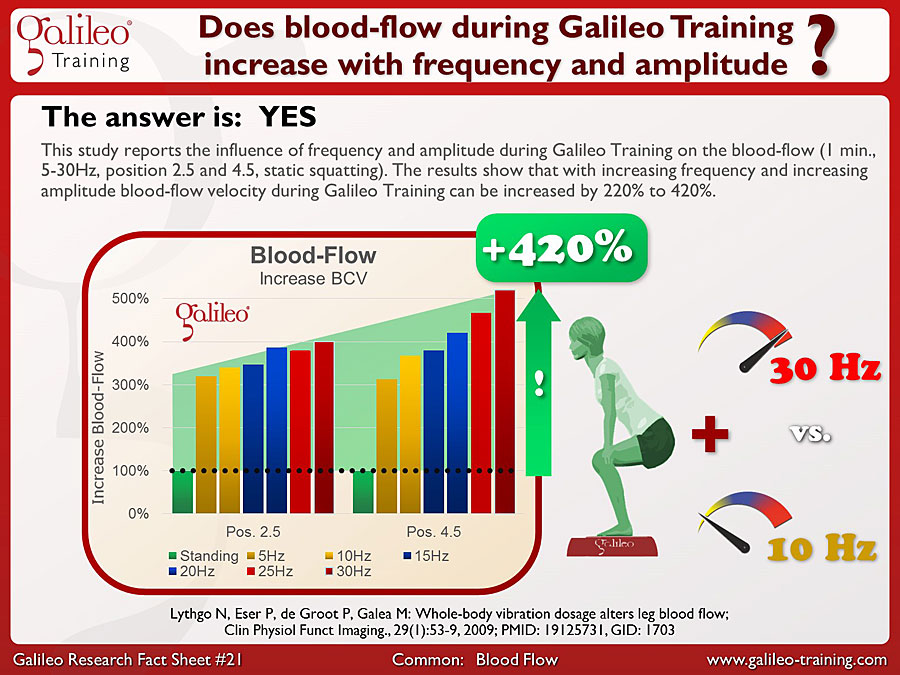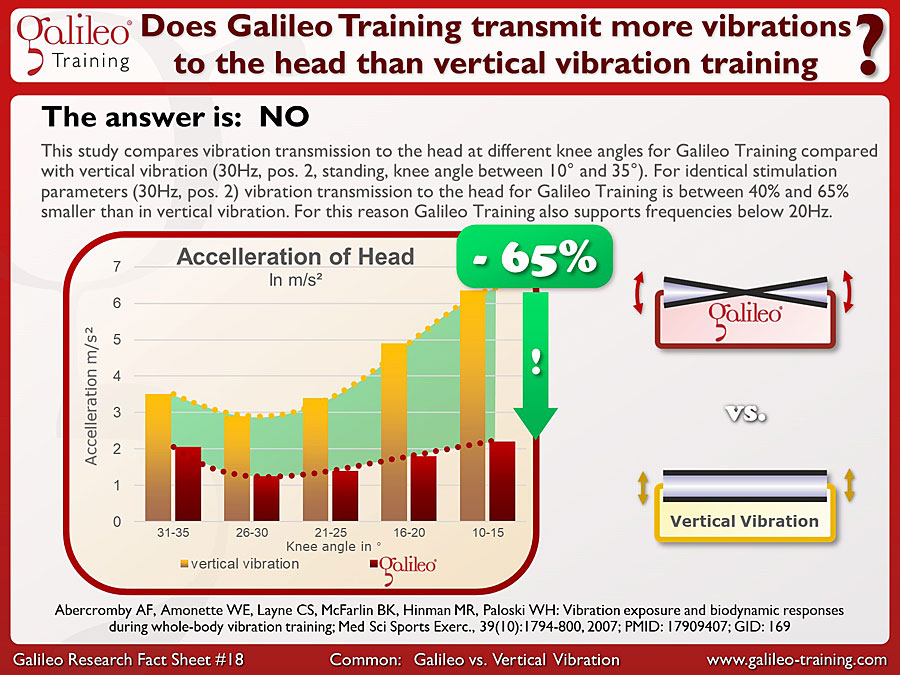Tag Archives: MechanoStimulation
Galileo Research Facts No. 167: Are Joint Torques during Galileo Training Dependent on Frequency and Amplitude?
This study investigates the effects of Frequency and Amplitude during Galileo Training on joint torques (10, 20, 30Hz, pos.1, pos.2, pos.3, upright standing with straight legs). Joint torque showed an significant increase with increasing frequency and amplitude of up to 250% - nevertheless joint torques stayed below those of natural walking...
Galileo Research Facts No. 160: Does Galileo Training induce larger forces than in walking?
This study measured the ground reaction forces during Galileo Training (forces induced into the body) (10 - 30Hz, Pos.1 - Pos.3, upright standing, locked knees). Ground reaction forces showed values below body weight (<1g) while typical peak forces during walking are in the range of 1.2 times body weight – this shows once more the high safety aspects of Galileo Training...
Galileo Research Facts No. 173: Can Galileo Training increase Oxygen uptake compared to traditional exercises?
This study investigated the effects of squats and heel raises with extra loads on muscle function and cross-section with and without Galileo Training at 40Hz (20-40Hz, pos. 3-4, loads 80% 1RM (80kg), 3x8 squats (4 sec.), 3x12 heel raises, 6 weeks, 16 Sessions). The Galileo group showed with 5-12% lower additional training mass a significantly higher oxygen uptake (+15%) and therefore a higher training efficiency...
Galileo Research Facts No. 123: Can Galileo Training during squats increase muscle activation with each repetition?
This study investigates the effects of exhaustive squats with and without Galileo Training on muscle activation (EMG) (5*10 Sets deep squats, with & without Galileo Training, 22Hz, pos. 4, extra weight: 10RM = 60% Body mass). Compared to the control group without vibration the Galileo Group could almost triple muscle activation (+196%) during eight repetitions...
Galileo Research Facts No. 87: Can 18 minutes Galileo Training per week reduce body fat?
During the 2nd Berlin Bedrest Study (BBR2) the participants had to stay in bed for 55 days. One control group did no training at all, the second one resistance exercises (RE) and the Galileo group did resistance training + vibration (24Hz, 6x1 min. to exhaustion, 3/week). While both control groups increased local body fat only the Galileo group was able to reduce local body fat by up to 12% with just 18 minutes Training per week...
Galileo Research Facts No. 28: Can Galileo Training compensate the negative effects of HIT on anaerobic power?
This study used Galileo Training in rest phases between High Intensity Training (HIT) intervals to reduce loss of anaerobic power (20 Sessions HIT, HIT+18Hz/HIT+30Hz, 3 min., pos. 3, knees half bent). Galileo Training during rest phases could compensate the HIT associated loss of anaerobic power and MyHC-2x fiber cross-sectional area completely. Galileo Training at 18 Hz showed about 20% higher effects than training at 30Hz...
Galileo Research Facts No. 21: Does blood-flow during Galileo Training increase with frequency and Amplitude?
This study reports the influence of frequency and amplitude during Galileo Training on the blood-flow (1 min., 5-30Hz, position 2.5 and 4.5, static squatting). The results show that with increasing frequency and increasing amplitude blood-flow velocity during Galileo Training can be increased by 220% to 420%.
Galileo Research Facts No. 18: Does Galileo Training transmit more vibrations to the head than vertical vibration training?
This study compares vibration transmission to the head at different knee angles for Galileo Training compared with vertical vibration (30Hz, pos. 2, standing, knee angle between 10° and 35°). For identical stimulation parameters (30Hz, pos. 2) vibration transmission to the head for Galileo Training is between 40% and 65% smaller than in vertical vibration. For this reason Galileo Training also supports frequencies below 20Hz...
Galileo Research Facts No. 15: Can Galileo Training decrease contractures?
This study shows the effect of Galileo Therapy (Cologne Concept: 3x3 minutes, 10 session/week, 26 weeks) with Spina Bifida patients (5-13 years). Contractures in Hip extension improved up to 36% and up to 14% in knee extension. At the same time standing improved by 36% (GMFM-D) and walking improved by 20% (GMFM-E). (Before Galileo Therapy, after Galileo, after additional 6 month without Galileo Therapy)...

